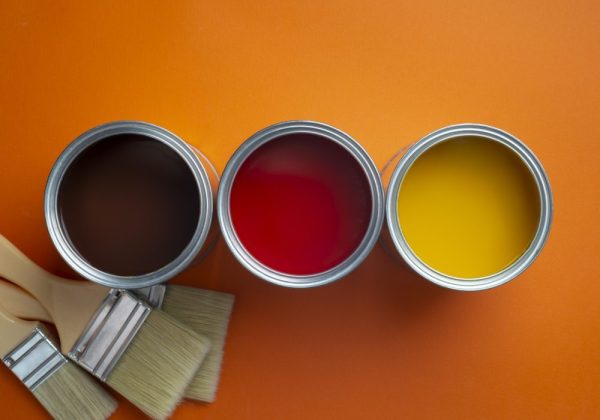
With the rapid development of the coatings industry, the demand for calcium carbonate powder is increasing, and the quality requirements are becoming more and more stringent and diversified, which also makes the calcium carbonate products for coatings show the trend of nano-ization, functionalization, surface modification and specialization.
1. Nano-ization
In the coatings industry, nano calcium carbonate has a steric hindrance effect, which can play an anti-settling role in the coating formula, and can also add whiteness and gloss without affecting the hiding power, which can significantly improve the storage stability of the coating.
Using the “blue shift” phenomenon, adding it to the latex can form a shielding effect on the coating, achieve the purpose of anti-ultraviolet aging and anti-heat aging, and increase the thermal insulation of the coating. Nano calcium carbonate is used as a filler and can be filled into the coating to greatly improve its flexibility, hardness, leveling, deposition and permeability of the paint film.
Exterior wall coating: When nano calcium carbonate is applied to exterior wall coating, the coating shows strong “hydrophobicity”, and the crack resistance and pollution resistance of the coating are enhanced.
Water-based latex paint: Generally, latex paint formulas contain a certain amount of rigid particles, and some formulas contain a considerable amount of rigid particles. The presence of these rigid particles will lead to excessive stress concentration in the coating film, causing cracks in the resin. The introduction of nano calcium carbonate makes it more likely to contact with the resin, produces more microcracks and causes elastic deformation, converts more impact energy into heat energy and absorbs it, thereby improving toughness.
By adding 2%-5% of nano calcium carbonate with special polymer surface treatment to traditional latex paint, it is found that not only the rheology and can opening effect of the paint are improved, but more surprisingly, the water resistance, scrub resistance and hardness are greatly improved, and the increase in scrub resistance shows a geometric growth.
Due to its nano size effect, large specific surface area, highly activated surface atoms and high interfacial interaction with polymers, nano calcium carbonate, when added to the paint, gives the paint a special modified function. Nano calcium carbonate is used in anti-stone impact paint and topcoat for automobile chassis due to its good thixotropy.
2. Functionalization
With the continuous improvement of scientific and technological research and development and the quality of life, consumers have higher requirements for product functions, and high performance and multifunctionality have become the development trend of the coating industry.
Adding nano calcium carbonate, nano ZnO, etc. to the coating system can make the coating have antibacterial and anti-mildew effects while improving the weather resistance of the coating film, greatly improving the overall quality of the coating.
3. Surface modification
In recent years, the application of nano calcium carbonate to coatings in order to improve coating performance is one of the hot topics in the coating industry. Nano calcium carbonate is directly applied to coatings, and there are the following defects:
The surface energy of the particles is high, in a thermodynamically unstable state, and it is very easy to agglomerate;
The surface of calcium carbonate is hydrophilic and oleophobic, with high polarity, and it is difficult to disperse in organic media. The bonding force with the base material is poor, and it is easy to form interface defects, resulting in a decrease in coating performance.
The application of nano calcium carbonate particles in coatings involves the compatibility of nano materials and base materials. The film-forming base materials of coatings are obviously different from polymers such as plastics and rubber in terms of the type and quantity of functional groups and relative molecular mass, which leads to differences in the surface polarity of polymers and the way they interact with pigments and fillers. In order to successfully apply nano calcium carbonate to coatings, the surface of nano calcium carbonate must be modified.
4. Specialization
In addition, with the development of the calcium carbonate industry, many special coating calcium carbonates have emerged. Some have specific crystal shapes, some have a particle size of less than 0.1, some are not easy to settle, some have high gloss, and some are easy to disperse. More and more high-end manufacturers are looking for special calcium carbonate for coatings.
